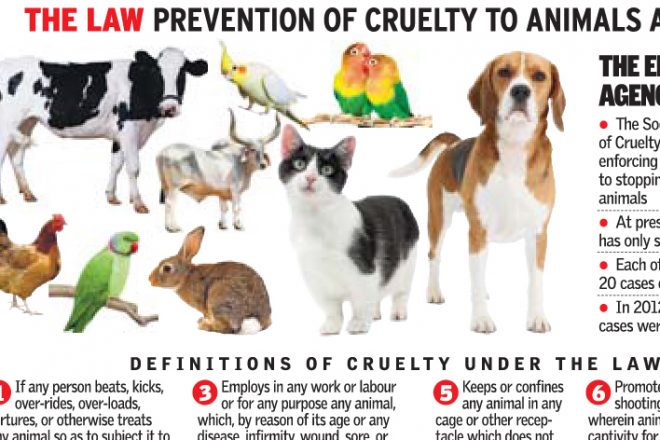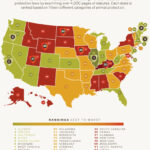In the realm of wildlife, where survival is paramount and the struggle for existence permeates every facet of life, the question often arises: do animals themselves exhibit cruelty? This inquiry not only challenges our understanding of animal behavior but also brings into focus the intricate interplay of instinctual drives and the moral constructs we impose upon the animal kingdom. It prompts an examination of cruelty against the backdrop of nature, revealing a tapestry woven with the threads of survival, predation, and social interaction.
At first glance, cruelty in animals may manifest through acts that elicit discomfort. For instance, certain predatory behaviors, such as a carnivore aggressively pursuing its prey, may appear brutal. Yet, within the context of nature, these actions embody the fundamental principles of the survival of the fittest. Predation ensures the balance of ecosystems, preventing overpopulation and promoting biodiversity. Hence, what may seem cruel from a human perspective can be viewed through a more nuanced lens, revealing an unyielding necessity for survival.
Moreover, animal interactions often portray complex social structures, which can inadvertently give rise to behaviors that we perceive as cruelty. Amongst certain species, one can observe acts of violence during mating competitions, where males exhibit aggression toward rivals to assert dominance and secure mating opportunities. Such behaviors, while they may appear ruthless, serve evolutionary purposes, ensuring the continuation of strong genetic lines. Yet, this raises an essential question: how much of this behavior is driven by instinct versus conscious morality?
To delve deeper, we must differentiate between “behavior” and “morality.” Behavior in animals is largely governed by instinctual drives shaped by millions of years of evolution. These instinctual behaviors, honed for survival, do not inherently incorporate a moral framework. In contrast, morality—often considered a human construct—requires a level of cognitive processing that many animals may not possess at the same level. The capacity for empathy, altruism, and moral reasoning is not universally present across the animal kingdom. This is particularly evident when observing social species, such as elephants and dolphins, known for their displays of empathy, which suggest a sophisticated emotional landscape beyond sheer survival.
In contrast, certain species display behaviors that appear to contradict moral sensibilities. For example, the practice of infanticide—where an adult animal intentionally kills the offspring of others—can be witnessed in various species, including primates and felines. A lioness may kill the cubs of another lioness upon taking control of a pride, ensuring her own offspring receive optimum care and resources. Such actions, while deeply unsettling from a moral standpoint, reflect a calculating strategy aimed at fostering reproductive success. These instances compel us to assess the motivations driving these behaviors: are they rooted in cruelty or simply a manifestation of evolutionary pressures?
Furthermore, it is crucial to distinguish the context of behavior. In situations where resources are scarce, animals may exhibit increased aggression, as seen in territorial disputes. This behavior not only underscores the innate drive for survival but also points to the consequential nature of their interactions. Animals in these predicaments might inflict harm on one another not out of cruelty but necessity. The term “survival” supersedes moral ambiguity in these interactions, as each participant navigates the unforgiving landscape of their habitat.
Yet, reflecting on the broader implications of animal cruelty invites further contemplation. It beckons us to consider the ethics of how humans relate to the natural world. In our endeavor to delineate the lines between behavior and morality within the animal kingdom, we must turn our gaze inward. How do we apply our moral constructs to creatures who may lack the cognitive ability to comprehend such concepts? Are we imposing our own values onto beings whose existence is shaped by different standards of survival and social interactions?
This acknowledgment of differing moral frameworks paves the way for a deeper understanding of the relationship between humans and animals. As animal activists, it is essential to advocate not only for the cessation of human-inflicted cruelty but also to appreciate the complexities of animal behavior itself. Recognizing the inherent instincts governing animal actions can foster a more compassionate viewpoint, encouraging coexistence rather than judgment.
Additionally, understanding animal behavior through this lens can lead to enhanced approaches in conservation efforts. By recognizing the motivations behind certain behaviors, we can tailor strategies that respect the ecological dynamics at play. This shift in perspective can also influence how we engage in educational dialogues about wildlife, imparting a sense of respect for the natural order rather than perpetuating the notion of unyielding cruelty.
As we navigate the complexities of animal behavior, it becomes evident that the narratives we adopt shape our understanding of both cruelty and morality. While animals certainly exhibit behaviors that challenge our notions of empathy and kindness, it is imperative to interpret these actions within the context of survival. In doing so, we uncover not just the essence of animal behavior but also an opportunity for renewed respect for the diverse expressions of life on Earth. Ultimately, this dialogue is not merely about the animals themselves but serves as a reflection on our humanity and the ethical obligations we bear toward all manifestations of life.








